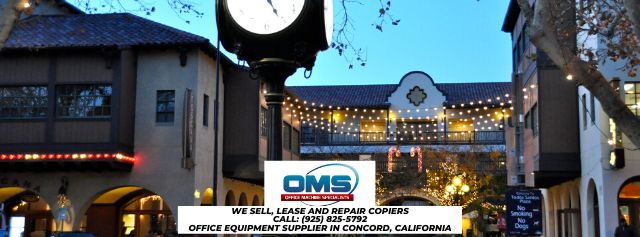Office Machine Services and Sales Solutions
Next to Suisun Bay in Benicia, California, the Benicia Arsenal (1851-1964) and Benicia Barracks (1852-66) was part of a large military reservation. The arsenal was the largest U.S. Army Ordnance plant for the United States West Coast for over 100 years.
A 252-acre (102 ha) plot of land adjacent to the east of the Benicia city limits was purchased in 1847 for a military reserve. On 9 April 1849, when two companies of the 2nd Infantry Regiment set up camp to construct Benicia Barracks, which also housed the 3rd Artillery Regiment, the first occupation of the post was. The first Ordnance Supply Depot in the West was built in Benicia in 1851, after the urging of General Persifor F. Smith. It was named the Benicia Arsenal in 1852. Ulysses Grant, Edward Ord, and Joseph Hooker, among others, are notable military personnel who were stationed there during this period.
The Benicia Arsenal is also famous for stabilizing one of the components of the Camel Corps of the Army. In 1863, the short-lived Camel Corps was disbanded, but the Camel Barns, established in 1855, remain as the Historical Museum of Benicia.
During the Civil War, the Benicia Arsenal was a staging area for Western Union forces, and the facility remained a garrisoned post until 1898, during the Spanish-American War when troops were assigned to duty in the Philippines. Colden Ruggles, who later served as the Army’s Chief of Ordnance, commanded the arsenal from 1911 to 1913. The Benicia Arsenal provided ordnance support to all major Army facilities in the Western States during World War I as well as providing Ordnance material to American expeditionary forces in Siberia during the First World War. During World War 2, the Italian Military Units of the 4th, and 50th Italian Quartermaster Service Companies served at the Arsenal.
125 separate truck convoys were loaded and dispatched from the Benicia Arsenal in the 24 hours following the Pearl Harbor bombing, leaving its stock of ammunition, small arms, and high explosives completely depleted. Throughout the war, the arsenal delivered guns, artillery, components, equipment, and instruments to ports. Furthermore, 14,343 pairs of binoculars were overhauled by the arsenal, 180,000 small items were produced for tanks and guns, and approximately 70,000 watches were repaired. The arsenal is most notable, however, for providing Lieutenant Colonel Jimmy Doolittle with ammunition for the first bombing raid launched from the USS Hornet on Tokyo on April 18, 1942.
Prior to 1940, 85 civilian workers were hired by the arsenal; by October 1942, the payroll had reached 4,545. The labor shortage in 1944 compelled the arsenal commander, alongside 150 juveniles from the California Youth Authority, to put 250 Italian and 400 German prisoners of war to work. Almost half of the civilian population was composed of women. The number of civilians hit an all-time high of 6,700 laborers during the Korean War.
In 1963, the Benicia Arsenal was deactivated, and in 1964 the facility was closed. For artists and craftsmen, the arsenal was redeveloped as work and sales space.
Medal of Honor recipient John H. Foley is buried in the arsenal’s cemetery.
This amazing landmark in Benicia, California is located near some other must-see places of interest:
- Benicia Capitol State Historic Park
- Glass Beach
- Benicia Historical Museum at the Camel Barns
- Benicia State Recreational Area
- Benicia Main Street: First Street
- Lindsay Art Glass
- 9th Street Park (AKA the 9th Street Pier)
- Fischer Hanlon House
All of these wonderful landmarks are located just a short distance from our location at 1091 Shary Circle in Concord, California! Stop by for a visit anytime!
